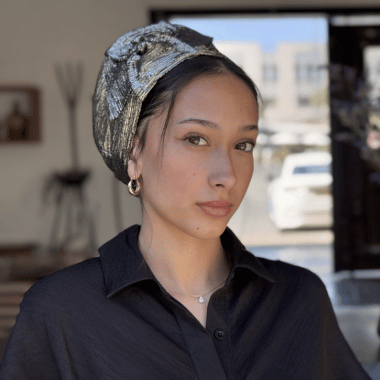Introduction:
The headscarf, a versatile piece of fabric worn around the head and neck, has adorned individuals for centuries across various cultures. From the vibrant turbans of Sikhism to the elegant hijabs worn by Muslim women, head coverings hold deep significance, representing cultural identity, religious beliefs, and personal style.
In recent years, headscarves have gained wider visibility beyond their traditional contexts, appearing in fashion trends and personal expressions. While this increased exposure can foster an appreciation for diverse cultures, it's essential to navigate the use of head coverings concerning avoid cultural appropriation.
Understanding Cultural Appropriation:
Cultural appropriation occurs when elements from a marginalized culture are adopted by a dominant culture without acknowledging their original meaning and significance. This often leads to the trivialization and commodification of cultural symbols, disrespecting the communities they represent.
In the context of head coverings, appropriation can manifest in several ways:
- Treating head coverings as mere fashion accessories: Disregarding the cultural and religious context in which they are traditionally worn can be insensitive and disrespectful.
- Misrepresenting the meaning behind head coverings: Using head coverings in a way that contradicts their intended purpose or meaning can be offensive and inaccurate.
- Failing to acknowledge the historical and ongoing struggles of communities who wear head coverings: Ignoring the experiences of marginalization and discrimination faced by many who wear head coverings can perpetuate harmful stereotypes.
Approaching Headscarves with Respect and Appreciation:
If you are interested in wearing a headscarf, it's crucial to approach it with respect and appreciation. Here are some key points to consider:
- Educate yourself: Before wearing a headscarf, learn about its cultural and religious significance in different communities. Research the different styles, their names, and the specific contexts in which they are worn.
- Be mindful of your intent: Ask yourself why you are interested in wearing a headscarf. Is it for cultural appreciation or simply to follow a trend? Reflecting on your motivations can help ensure you approach the practice with genuine respect.
- Choose your style thoughtfully: Not all head coverings are universally appropriate for everyone to wear. If you are unsure about a specific style, it's best to err on the side of caution and choose something that aligns with your cultural background.
- Respect modesty guidelines: If you are wearing a head covering in a religious context, it's important to be respectful of the modesty guidelines associated with that specific practice.
- Engage with communities respectfully: If you have questions or seek further understanding, consider engaging with individuals from the relevant communities in a respectful and mindful way. However, avoid relying solely on individuals as your sole source of information.
Conclusion:
Wearing a headscarf can be a beautiful way to express personal style and appreciate different cultures. However, it's crucial to approach this practice with respect and awareness. By understanding the cultural context, avoiding appropriation, and engaging with respect, we can create a world where diverse cultural expressions are valued and celebrated.
Additional Considerations:
- This blog post does not aim to be an exhaustive guide to every culture or head covering. Each culture and community may have unique customs and traditions regarding head coverings.
- It's important to remember that not everyone from a specific cultural background wears a headscarf. Generalizing or assuming everyone within a group wears a head covering can be insensitive and inaccurate.
- While this article highlights the importance of avoiding cultural appropriation, individual situations may require further nuanced understanding and respectful communication.
Remember: Respectful appreciation goes beyond simply avoiding appropriation. It's about fostering genuine understanding and celebrating cultural diversity in a mindful and inclusive way.


